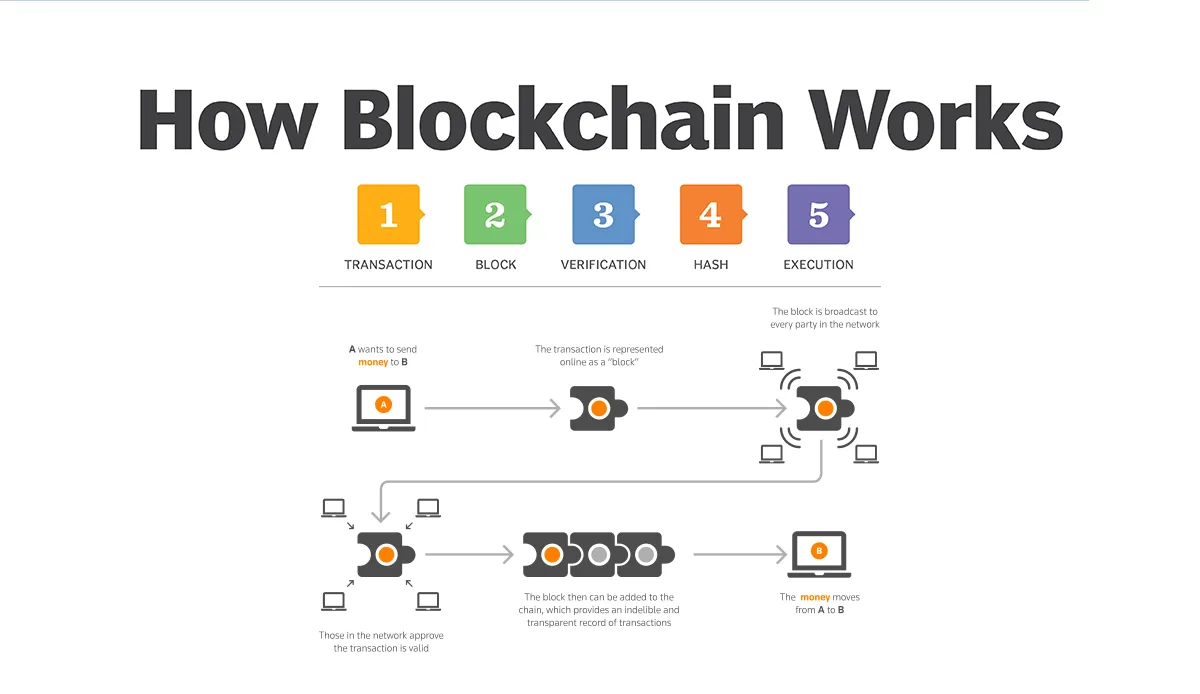Todos los que nos iniciamos en Hive hemos oído ese nombre, pero la gran mayoría de los usuarios, sobre todo los nuevos, no tendrán ni idea a lo que se refiere este término. Pienso que conocer como funciona y en que consiste la blockchain nos dará más confianza como usarios, ya que al final, nuestras transacciones están regidas por esta red, por ello te propongo que indagues junto a mi que es la blockchain, para que sirve esta tecnología y la importancia del avance de la criptografía para la misma.
¿En que consiste esta red?
En términos sencillos es una enorme base de datos que recoge y almacena la información de manera compartida y descentralizada. De esta forma se crea un registro que es único pero que a su vez generan copias sincronizadas, lo que hace imposible manipular los datos. La fiabilidad de esta cadena es muy grande porque los bloques guardan la información de manera lineal y no se pueden elimimar o manipular ya que cada bloque está conectado al anterior haciendo imposible que se rompa la cadena gracias al uso de la criptografía.
En esta gran base de datos se puede registrar todo tipo de operaciones digitales, desde la venta de una propiedad o la firma de un contrato entre compañías, hasta una patente, la adquisición de una obra de arte digital o de un NFT, según sean activos tangibles o intangibles. Todas estas acciones se registran en el llamado libro mayor distribuido, a estas grandes bases de datos tienen acceso un número limitado de personas que se encargan de introducir los datos en los bloques y se trabaja en varios nodos permitiendo que la información siempre esté disponible gracias a la capacidad de estos puntos para descentralizar y redistribuir los datos garantizando la seguridad y transparencia de cada registro.
¿Cuál es su utilidad?
Con la llegada de esta era digital, los datos se han vuelto la materia prima imprescindible para las empresas, y como esta red garantiza una transmisión de datos rápida y eficaz con la premisa que no se puede manipular ni eliminar ha logrado que su uso se extienda del sector financiero a otros más diversos como logística, sanidad, distribución o la fabricación, por mencionar un par de ejemplos. Estas empresas también usan la blockchain como un servicio por sus características ya mencionadas (confianza en transmisión de datos, eficacia y reducción de costes). Otro ámbito donde tiene uso esta red es en los casos de robo o fraude ya que elimina la posibilidad de duplicar este tipo de activos y ayuda a encontrar el activo robado.
¿Qué tiene que ver la criptografía en esto?
Esta disciplina matemática protege la información y las comunicaciones gracias al uso de una serie de algoritmos, generan claves criptográficas para proteger la información de las personas que no deben verlas y permitir que sólo las personas encargadas de la blockchain tengan acceso a las comunicaciones. La criptografía es la encargada de vincular unos bloques con otros, así como de proteger su contenido.
English version
All of us who are new to Hive have heard this name, but the vast majority of users, especially new ones, will have no idea what this term refers to. I think that knowing how it works and what the blockchain consists of will give us more confidence as users, since in the end, our transactions are governed by this network, so I propose that you investigate with me what the blockchain is, what this technology is for and the importance of the advancement of cryptography for it.
What does this network consist of?
In simple terms it is a huge database that collects and stores information in a shared and decentralized way. In this way a record is created that is unique but which in turn generate synchronized copies, making it impossible to manipulate the data. The reliability of this chain is very high because the blocks store the information in a linear way and cannot be deleted or manipulated since each block is connected to the previous one, making it impossible to break the chain thanks to the use of cryptography.
In this large database, all types of digital transactions can be recorded, from the sale of a property or the signing of a contract between companies, to a patent, the acquisition of a digital work of art or an NFT, depending on whether they are tangible or intangible assets. All these actions are recorded in the so-called distributed ledger, these large databases are accessed by a limited number of people who are responsible for entering the data in the blocks and work in several nodes allowing the information to be always available thanks to the ability of these points to decentralize and redistribute the data ensuring the security and transparency of each record.
What is its usefulness?
With the advent of this digital era, data has become the essential raw material for companies, and as this network guarantees fast and efficient data transmission with the premise that it cannot be manipulated or deleted it has managed to extend its use from the financial sector to other more diverse sectors such as logistics, healthcare, distribution or manufacturing, to mention a couple of examples. These companies also use blockchain as a service due to its aforementioned characteristics (trust in data transmission, efficiency and cost reduction). Another area where this network has use is in cases of theft or fraud as it eliminates the possibility of duplicating these types of assets and helps to find the stolen asset.
What does cryptography have to do with this?
This mathematical discipline protects information and communications thanks to the use of a series of algorithms, they generate cryptographic keys to protect information from people who should not see them and allow only the people in charge of the blockchain to have access to communications. Cryptography is in charge of linking some blocks with others, as well as protecting their content.
- Translate by DeepL


